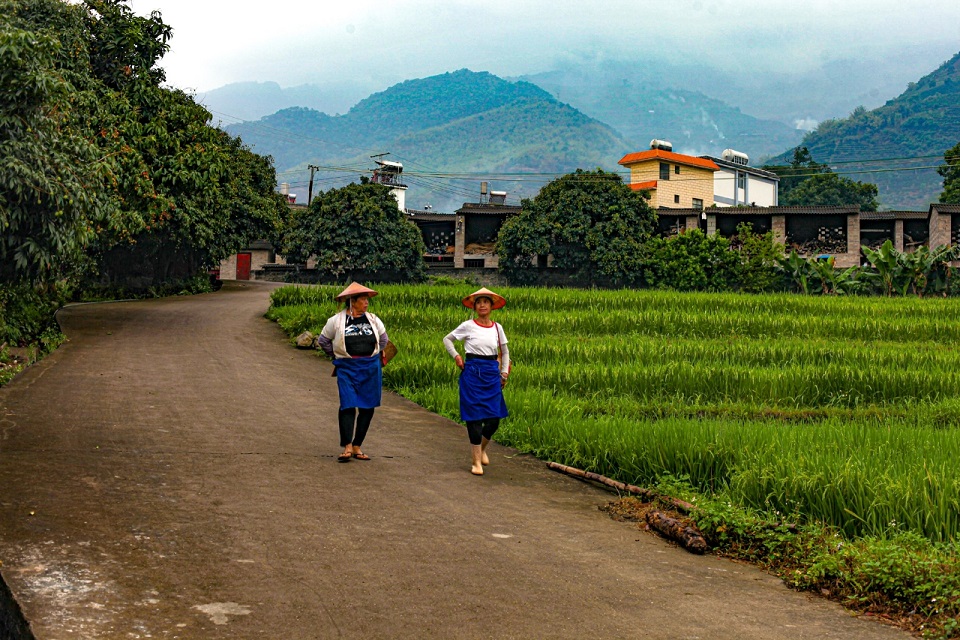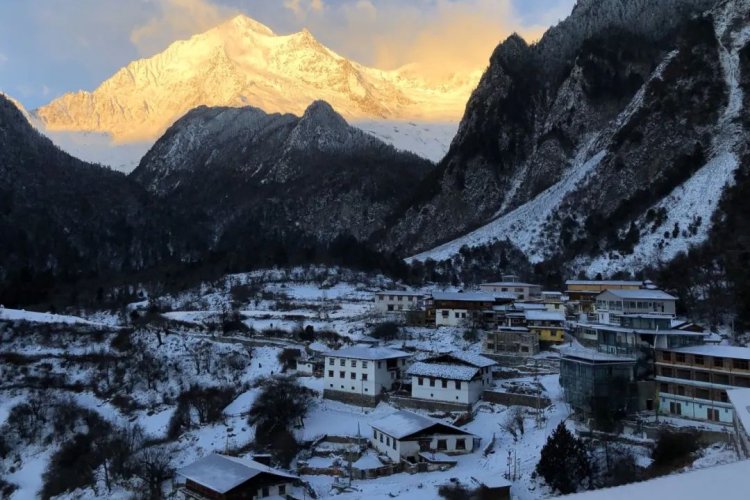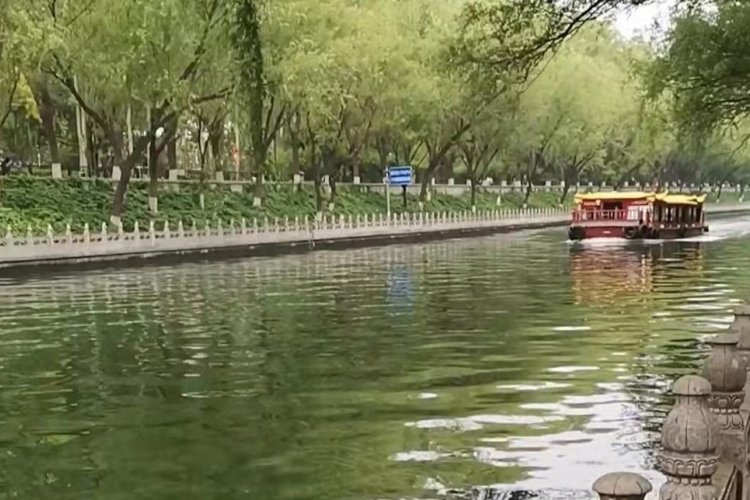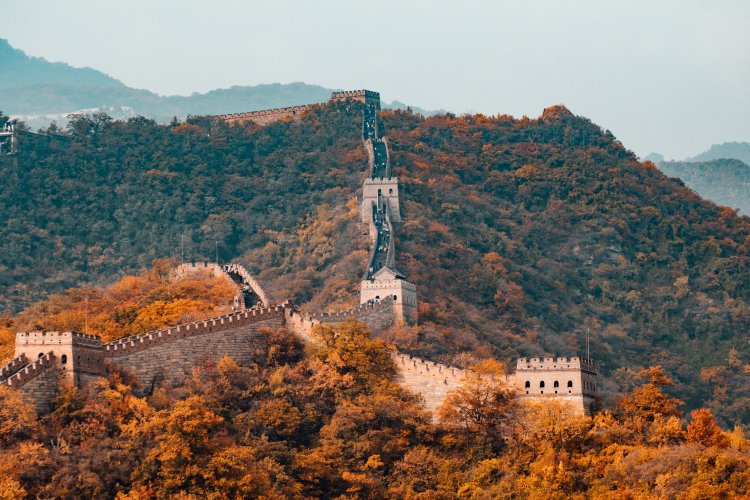Among the Clouds: Gasa Township and the Origins of Dai Culture
I dozed off as the minibus sped along the green slopes of south-central Yunnan. Shortly after passing the sleepy town of Xinping, we arrived in Gasa Township (戛洒镇). The Thai-style motifs of the buildings told me we were in Dai minority country. But Gasa is far north of Yunnan’s famous Xishuangbanna Dai prefecture. The locals here are the “Huayao” or “Flower Belt” Dai.
The Huayao Dai mainly live in the middle and upper reaches of the Red River Valley, where relative isolation has allowed them to preserve their unique culture. This is evident in Pingzhai Village, nestled in terraced green slopes at the edge of town.
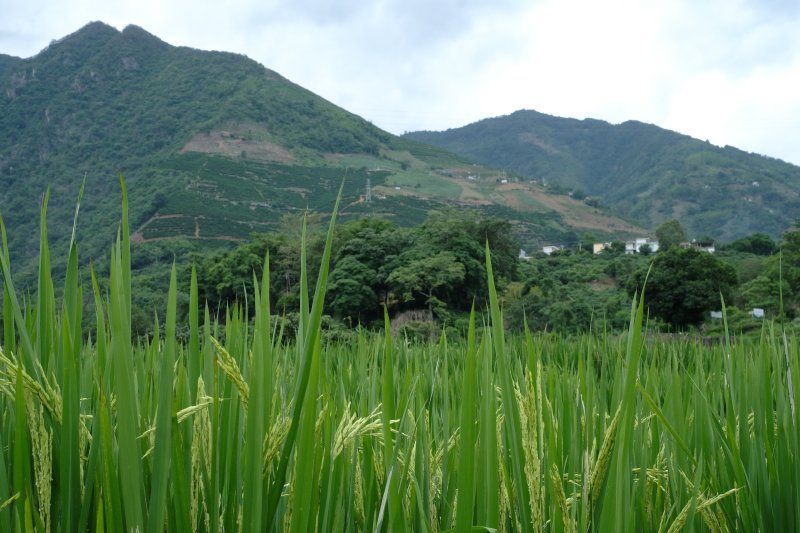
Pingzhai Village
Entering Pingzhai you hear water rushing along irrigation canals and birds chirping. Walking the streets you’re greeted by barking farm dogs and honking geese. It’s a village where you’re still more likely to see farmers working the fields than tourists roaming the alleyways.
At the southwest edge of Pingzhai is a barbecue restaurant called Number 10 Farmhouse (十号农庄). On my visit in July, the owner Baiqiu (白秋) introduced me to a group of Huayao Dai guests from Shuitang (水塘), a village further up the valley. They arrived in traditional costume.

A distinctive cultural inheritance
The intricate clothing of Huayao Dai women represents their ancient beliefs and customs. Their waist is wrapped in vibrant brocade belts, which are the origin of the name "Huayao Dai". Their silver chains symbolize the hearty rice grown by the Dai, who were some of the earliest rice cultivators in the region. The striking black-dyed teeth of many Huayao Dai are an expression of purity and good hygiene.

It was clear from their dress that the Shuitang women were proud of their heritage. It was also clear they had come for a proper feast. They grilled with remarkable efficiency. Spicy chicken thighs, sausages, and fish came off the grill in quick succession. We washed it down with coconut milk and toasted each other with rice wine.
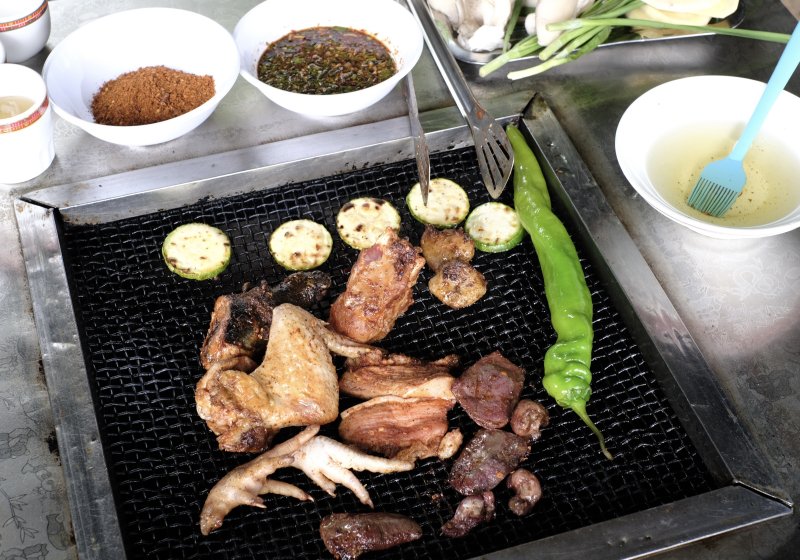
Towards the end of our meal Baiqiu rolled out an old wooden-case karaoke machine. The first singer was Ran. She chanted about the fortune of meeting a foreign friend from thousands of miles away. She and her companions then took turns blessing each other. Between each prayer, they would hum a calming falsetto note.
When the karaoke machine ran out of battery some of the women chatted and a few went to play on rope swings in the woods.
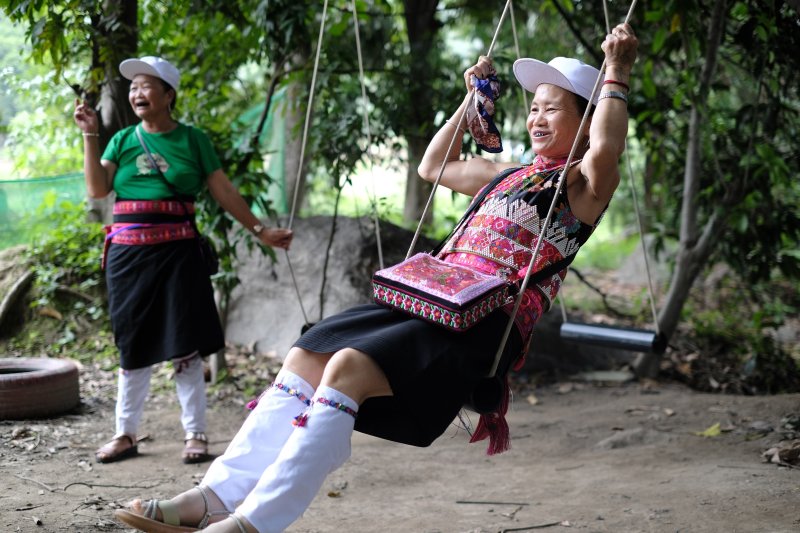
A birthday in Pingzhai
The night before I met the women from Shuitang I joined a large banquet at Pingzhai Village Hall. Hundreds of people were celebrating the birthday of a local one-year-old. A jovial group of men at one table invited me over. Among them was a tunnel construction worker nicknamed Little Germany. We toasted beers as he and his friends shared local delicacies and explained the distinctness of Huayao Dai culture. They were especially proud to share a hearty clump of locally grown purple sticky rice.

When all the tables had cleared out and our beers finished, Little Germany and his friend Dong took me dancing in the village square. We made a mess of the routines while the women next to us moved gracefully. A video seemed to have made the rounds, as the next day Baiqiu and another local asked me if I was the foreigner from the square.
The birthday party and lunch at the farmhouse gave me a taste of how locals in Gasa like to celebrate, but I have yet to experience quintessential Huayao Dai festivals like “Calling on the Moon God” and “Flower Avenue”.

A cry in the moonlight, an avenue of blossoms
Every year in mid-February or March, two days before the full moon, Huayao Dai residents in Gasa “Call on the Moon God”. They pray for good weather and an abundant harvest. Unlike other branches of Dai culture, which have adopted Theravada Buddhism, Huayao Dai still practice an animist religion. They believe all things in nature possess life and soul and that humans should be humble to the powerful forces of nature.
The Huayao Dai are also known for the “Flower Avenue” festival, when women march with rice seedling baskets as a symbol of courtship. The Shuitang women did a miniature Flower Avenue parade at No. 10 Farmhouse. They donned their pink embroidered jackets and walked solemnly through colorful archways at the restaurant entrance. Ran led one procession, filming it with her smartphone. When the mini-parade was finished we danced to disco music on the recharged karaoke machine.
The people I met in Gasa showed how Huayao Dai culture persists not simply because of seclusion but more importantly because of their social bonds and vitality.

Orientation
Culture
The Huayao Dai are one of four branches of Yunnan’s Dai ethnic minority group, which has historical links to Thai culture. Huayao Dai beliefs, customs and language differ markedly from other Dai groups. Some 11,000 Huayao Dai live in Gasa Township.
Location
Gasa is located some 200 kilometers southwest of Kunming in Xinping Yi and Dai Autonomous County, Yuxi Prefecture. It rests at the eastern foot of the central Ailao Mountains on the Red River, 40 kilometers away from Xinping County seat. Within reach of Gasa are cool upland waterfalls and subtropical river basins. It is not to be confused with another Gasa in Xishuangbanna Dai Autonomous Prefecture further south.
Gasa has a number of hotels that cater to foreign tourists. The closest to Pingzhai Village is the Xinping Huayao Tianjian Hotel (新平花腰田间酒店) several minutes walk from Gasa bus terminus.
You can visit Gasa as a side trip from Kunming or as part of a wider trip south to Yunnan’s tea capital Pu’er and tropical Xishuangbanna, where you can further explore Dai minority cultures. Another option is to go southeast from Gasa towards Honghe Prefecture.
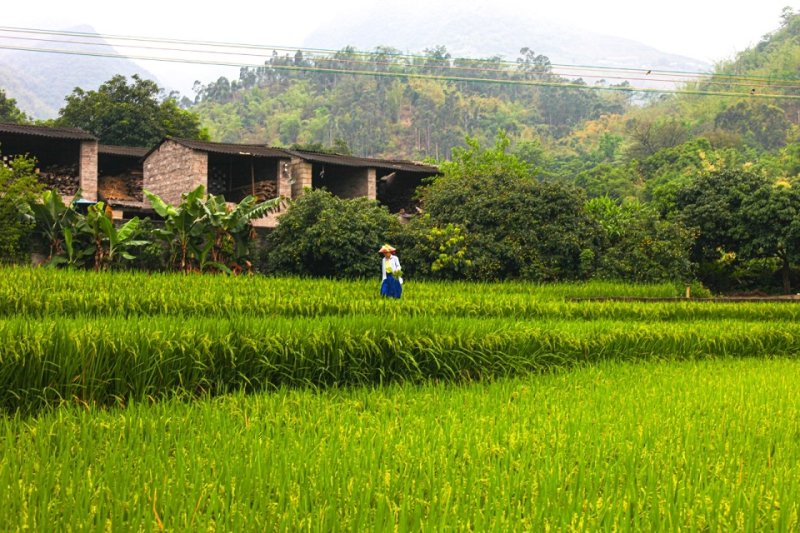
Getting there and away
Kunming South Passenger Bus Terminus (南部汽车客运站) has daily buses direct to Gasa. Departure times and ticket prices vary, so it is best to check at Kunming South Bus Terminus or a travel APP like Tongcheng Travel (同程旅行) in WeChat. The price from Kunming to Gasa is RMB 100. The trip takes about three hours. Before purchasing a ticket, make sure you are going to Gasa in Xinping County (新平县) and not the Gasa in Xishuangbanna.
A number of buses each day leave Gasa Passenger Bus Terminus (戛洒客运站) for nearby destinations. Most go to Xinping, where there are more transfer options. It is unlikely to get a bus to Xinping after 5.30pm and few buses go from Gasa to Kunming directly. Again it is best to check bus times and prices at the terminus or online.
To get to Pingzhai Village, follow the road leading westward from Gasa Bus Terminus past a billowing factory towards the Ailao foothills. You’ll see tourist signs pointing towards Pingzhai Village (平寨村) and the Huayao Tianjian Scenic Area (花腰田间风景区). Before you get to Pingzhai you’ll see the Xinping Huayao Tianjian Hotel on your left.

Acknowledgments
Gifford Searls and Howard Huxter contributed to this article.
Information on the history and folklore of Gasa Village and the Huayao Dai culture is informed by "Entering the Huayao Dai", "Huayao Dai Etiquette and Customs" and a conversation with Zhou Deyong, vice president of the Dai Society of Yunnan Province.
A special thanks to Baiqiu of No. 10 Farmhouse, as well as Tao Ming, president of the Dai Society in Gasa Village, Xinping County, Bai Yiwu, president of the Dai Society in Xinping County, Dao Minghua, vice president of the Dai Society in Xinping County; also Zhou Deyong, vice president of the Dai Society in Yunnan Province, for this folklore introduction and additional support.
READ: Get Lost in Kunming: Yunnan's Underrated Capital City
Images: CloudBridge Media

